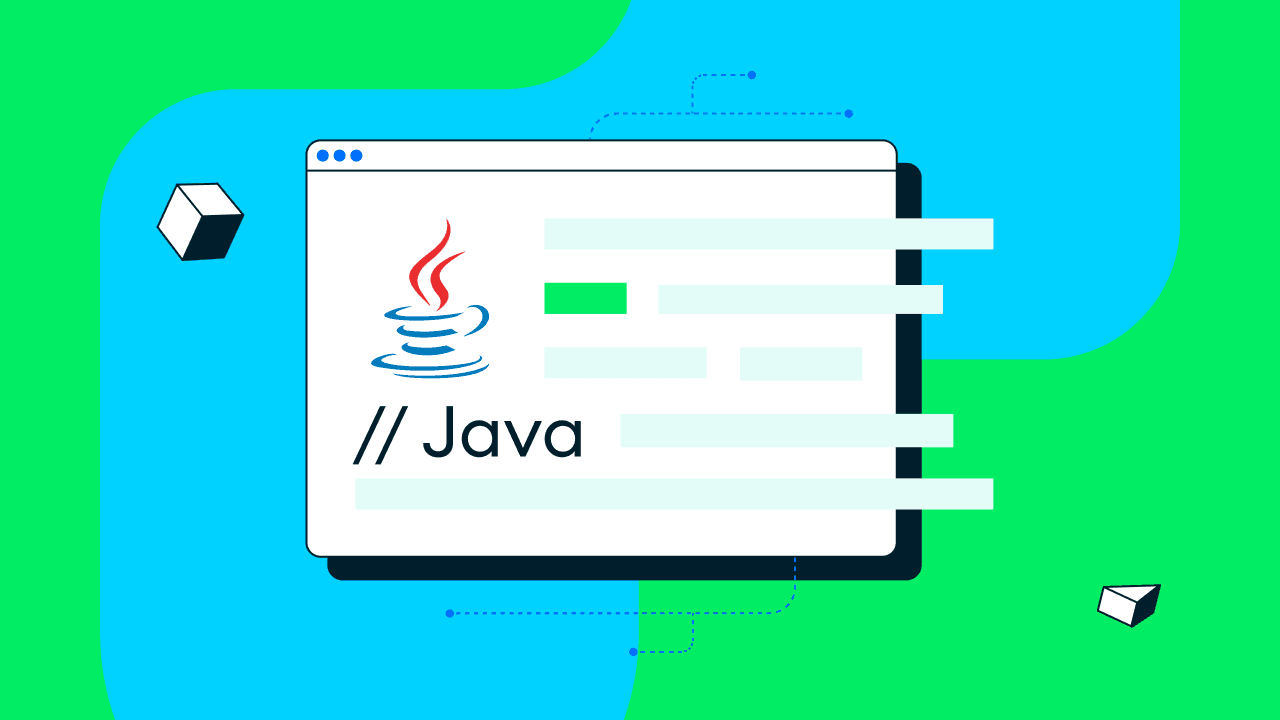Java - Mapping POJOs
Rate this quickstart
- Update to Java 21
- Update Java Driver to 5.0.0
- Update
logback-classicto 1.2.13
- Update to Java 17
- Update Java Driver to 4.11.1
- Update mongodb-crypt to 1.8.0
- Update Java Driver to 4.2.2.
- Added Client Side Field Level Encryption example.
- Update Java Driver to 4.1.1.
- The Java Driver logging is now enabled via the popular SLF4J API, so I added logback in the
pom.xmland a configuration filelogback.xml.

Java is an object-oriented programming language and MongoDB stores documents, which look a lot like objects. Indeed, this is not a coincidence because that's the core idea behind the MongoDB database.
In this blog post, as promised in the first blog post of this series, I will show you how to automatically map MongoDB documents to Plain Old Java Objects (POJOs) using only the MongoDB driver.
I will use the same repository as usual in this series. If you don't have a copy of it yet, you can clone it or just update it if you already have it:
1 git clone https://github.com/mongodb-developer/java-quick-start
If you haven't yet set up your free cluster on MongoDB Atlas, now is a great time to do so. You have all the instructions in this blog post.
If you followed this series, you know that we have been working with the
grades collection in the sample_training database. You can import it easily by loading the sample dataset in MongoDB Atlas.Here is what a MongoDB document looks like in extended JSON format. I'm using the extended JSON because it's easier to identify the field types and we will need them to build the POJOs.
1 { 2 "_id": { 3 "$oid": "56d5f7eb604eb380b0d8d8ce" 4 }, 5 "student_id": { 6 "$numberDouble": "0" 7 }, 8 "scores": [{ 9 "type": "exam", 10 "score": { 11 "$numberDouble": "78.40446309504266" 12 } 13 }, { 14 "type": "quiz", 15 "score": { 16 "$numberDouble": "73.36224783231339" 17 } 18 }, { 19 "type": "homework", 20 "score": { 21 "$numberDouble": "46.980982486720535" 22 } 23 }, { 24 "type": "homework", 25 "score": { 26 "$numberDouble": "76.67556138656222" 27 } 28 }], 29 "class_id": { 30 "$numberDouble": "339" 31 } 32 }
The first thing we need is a representation of this document in Java. For each document or subdocument, I need a corresponding POJO class.
As you can see in the document above, I have the main document itself and I have an array of subdocuments in the
scores field. Thus, we will need 2 POJOs to represent this document in Java:- One for the grade,
- One for the scores.
In the package
com.mongodb.quickstart.models, I created two new POJOs: Grade.java and Score.java.1 package com.mongodb.quickstart.models; 2 3 // imports 4 5 public class Grade { 6 7 private ObjectId id; 8 9 private Double studentId; 10 11 private Double classId; 12 private List<Score> scores; 13 14 // getters and setters with builder pattern 15 // toString() 16 // equals() 17 // hashCode() 18 }
In the Grade class above, I'm using
@BsonProperty to avoid violating Java naming conventions for variables, getters, and setters. This allows me to indicate to the mapper that I want the "student_id" field in JSON to be mapped to the "studentId" field in Java.1 package com.mongodb.quickstart.models; 2 3 import java.util.Objects; 4 5 public class Score { 6 7 private String type; 8 private Double score; 9 10 // getters and setters with builder pattern 11 // toString() 12 // equals() 13 // hashCode() 14 }
As you can see, we took care of matching the Java types with the JSON value types to follow the same data model. You can read more about types and documents in the documentation.
Now that we have everything we need, we can start the MongoDB driver code.
I created a new class
MappingPOJO in the com.mongodb.quickstart package and here are the key lines of code:- I need a
ConnectionStringinstance instead of the usualStringI have used so far in this series. I'm still retrieving my MongoDB Atlas URI from the system properties. See my starting and setup blog post if you need a reminder.
1 ConnectionString connectionString = new ConnectionString(System.getProperty("mongodb.uri"));
- I need to configure the CodecRegistry to include a codec to handle the translation to and from BSON for our POJOs.
1 CodecRegistry pojoCodecRegistry = fromProviders(PojoCodecProvider.builder().automatic(true).build());
- And I need to add the default codec registry, which contains all the default codecs. They can handle all the major types in Java-like
Boolean,Double,String,BigDecimal, etc.
1 CodecRegistry codecRegistry = fromRegistries(MongoClientSettings.getDefaultCodecRegistry(), 2 pojoCodecRegistry);
- I can now wrap all my settings together using
MongoClientSettings.
1 MongoClientSettings clientSettings = MongoClientSettings.builder() 2 .applyConnectionString(connectionString) 3 .codecRegistry(codecRegistry) 4 .build();
- I can finally initialise my connection with MongoDB.
1 try (MongoClient mongoClient = MongoClients.create(clientSettings)) { 2 MongoDatabase db = mongoClient.getDatabase("sample_training"); 3 MongoCollection<Grade> grades = db.getCollection("grades", Grade.class); 4 [...] 5 }
As you can see in this last line of Java, all the magic is happening here. The
MongoCollection<Grade> I'm retrieving is typed by Grade and not by Document as usual.In the previous blog posts in this series, I showed you how to use CRUD operations by manipulating
MongoCollection<Document>. Let's review all the CRUD operations using POJOs now.- Here is an insert (create).
1 Grade newGrade = new Grade().setStudent_id(10003d) 2 .setClass_id(10d) 3 .setScores(List.of(new Score().setType("homework").setScore(50d))); 4 grades.insertOne(newGrade);
- Here is a find (read).
1 Grade grade = grades.find(eq("student_id", 10003d)).first(); 2 System.out.println("Grade found:\t" + grade);
- Here is an update with a
findOneAndReplacereturning the newest version of the document.
1 List<Score> newScores = new ArrayList<>(grade.getScores()); 2 newScores.add(new Score().setType("exam").setScore(42d)); 3 grade.setScores(newScores); 4 Document filterByGradeId = new Document("_id", grade.getId()); 5 FindOneAndReplaceOptions returnDocAfterReplace = new FindOneAndReplaceOptions() 6 .returnDocument(ReturnDocument.AFTER); 7 Grade updatedGrade = grades.findOneAndReplace(filterByGradeId, grade, returnDocAfterReplace); 8 System.out.println("Grade replaced:\t" + updatedGrade);
- And finally here is a
deleteOne.
1 System.out.println(grades.deleteOne(filterByGradeId));
1 package com.mongodb.quickstart; 2 3 import com.mongodb.ConnectionString; 4 import com.mongodb.MongoClientSettings; 5 import com.mongodb.client.MongoClient; 6 import com.mongodb.client.MongoClients; 7 import com.mongodb.client.MongoCollection; 8 import com.mongodb.client.MongoDatabase; 9 import com.mongodb.client.model.FindOneAndReplaceOptions; 10 import com.mongodb.client.model.ReturnDocument; 11 import com.mongodb.quickstart.models.Grade; 12 import com.mongodb.quickstart.models.Score; 13 import org.bson.codecs.configuration.CodecRegistry; 14 import org.bson.codecs.pojo.PojoCodecProvider; 15 import org.bson.conversions.Bson; 16 17 import java.util.ArrayList; 18 import java.util.List; 19 20 import static com.mongodb.client.model.Filters.eq; 21 import static org.bson.codecs.configuration.CodecRegistries.fromProviders; 22 import static org.bson.codecs.configuration.CodecRegistries.fromRegistries; 23 24 public class MappingPOJO { 25 26 public static void main(String[] args) { 27 ConnectionString connectionString = new ConnectionString(System.getProperty("mongodb.uri")); 28 CodecRegistry pojoCodecRegistry = fromProviders(PojoCodecProvider.builder().automatic(true).build()); 29 CodecRegistry codecRegistry = fromRegistries(MongoClientSettings.getDefaultCodecRegistry(), pojoCodecRegistry); 30 MongoClientSettings clientSettings = MongoClientSettings.builder() 31 .applyConnectionString(connectionString) 32 .codecRegistry(codecRegistry) 33 .build(); 34 try (MongoClient mongoClient = MongoClients.create(clientSettings)) { 35 MongoDatabase db = mongoClient.getDatabase("sample_training"); 36 MongoCollection<Grade> grades = db.getCollection("grades", Grade.class); 37 38 // create a new grade. 39 Grade newGrade = new Grade().setStudentId(10003d) 40 .setClassId(10d) 41 .setScores(List.of(new Score().setType("homework").setScore(50d))); 42 grades.insertOne(newGrade); 43 System.out.println("Grade inserted."); 44 45 // find this grade. 46 Grade grade = grades.find(eq("student_id", 10003d)).first(); 47 System.out.println("Grade found:\t" + grade); 48 49 // update this grade: adding an exam grade 50 List<Score> newScores = new ArrayList<>(grade.getScores()); 51 newScores.add(new Score().setType("exam").setScore(42d)); 52 grade.setScores(newScores); 53 Bson filterByGradeId = eq("_id", grade.getId()); 54 FindOneAndReplaceOptions returnDocAfterReplace = new FindOneAndReplaceOptions().returnDocument(ReturnDocument.AFTER); 55 Grade updatedGrade = grades.findOneAndReplace(filterByGradeId, grade, returnDocAfterReplace); 56 System.out.println("Grade replaced:\t" + updatedGrade); 57 58 // delete this grade 59 System.out.println("Grade deleted:\t" + grades.deleteOne(filterByGradeId)); 60 } 61 } 62 }
To start this program, you can use this maven command line in your root project (where the
src folder is) or your favorite IDE.1 mvn compile exec:java -Dexec.mainClass="com.mongodb.quickstart.MappingPOJO" -Dmongodb.uri="mongodb+srv://USERNAME:PASSWORD@cluster0-abcde.mongodb.net/test?w=majority"
Mapping POJOs and your MongoDB documents simplifies your life a lot when you are solving real-world problems with Java, but you can certainly be successful without using POJOs.
MongoDB is a dynamic schema database which means your documents can have different schemas within a single collection. Mapping all the documents from such a collection can be a challenge. So, sometimes, using the "old school" method and the
Document class will be easier.If you want to learn more and deepen your knowledge faster, I recommend you check out the MongoDB Java Developer Path training available for free on MongoDB University.
In the next blog post, I will show you the aggregation framework in Java.

